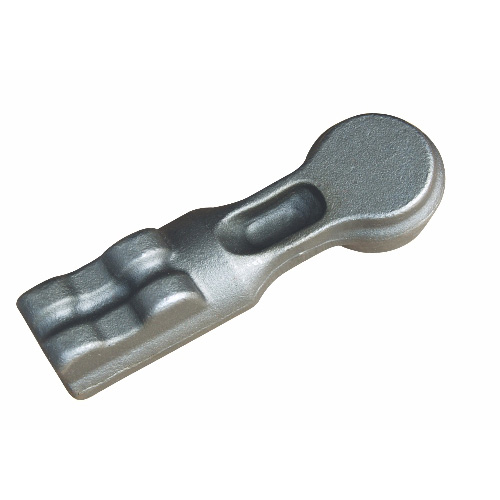Process improvement of circular fire cover forging blank
2022-12-08
After the above analysis, in order to improve the surface quality of forging blank and reduce the inclusion problem, it is necessary to improve from the following aspects:
1. Improve the surface quality of the blank before forging, especially the blank before forging should not have defects such as inclusion and surface cracking;
2. Blank shape and diameter: annular, chamfered edge, inner diameter is slightly less than the forging inner diameter size, outer diameter is slightly larger than the blank outer diameter size, so that the surface defect of the blank before forging is located in the flyside area of the forging, after forging forming will not affect the surface quality of the forging;
3. Blank thickness: The weight of the blank before forging is equal to the sum of the weight of the forged part, the weight of the auxiliary part and the weight of the raw edge. This weight can be obtained by directly weighing the formed part; Then for the inner dimension in the inner diameter is slightly less than the forging inner diameter size, the outer diameter is slightly larger than the blank outer diameter size on the basis of the setting, after the test mold correction and confirmation; Due to the good formability of copper, its blank thickness can be processed into rings of equal thickness, and its thickness size can be calculated by the following formula:
Blank weight =3.14/4 (D outside 2-D inside 2) * Copper density * Thickness To obtain the required blank, there are several options
Scheme 1. Ring bar of specified size - saw cutting.
Because the blank of annular fire cover forging has many specifications, and the outer diameter of annular bar is too large, to obtain the annular bar with the same inner and outer diameter, it needs to coordinate with the supplier to re-open the mold, which is very difficult, difficult to purchase in the market and high cost, so this scheme is denied.
Scheme two: Bar material - saw cutting material - forging upsetting - drilling inner hole - turning inner hole.
The upsetting process will make the outer edge of the blank crack, forming defects. At the same time, the process of making the blank is complicated, the drilling and turning of the blank flattening is difficult to locate, which is not conducive to the processing. This scheme is also low feasibility, so this scheme is not feasible.
Scheme 3. Centrifugal casting - turning and chamfering.




